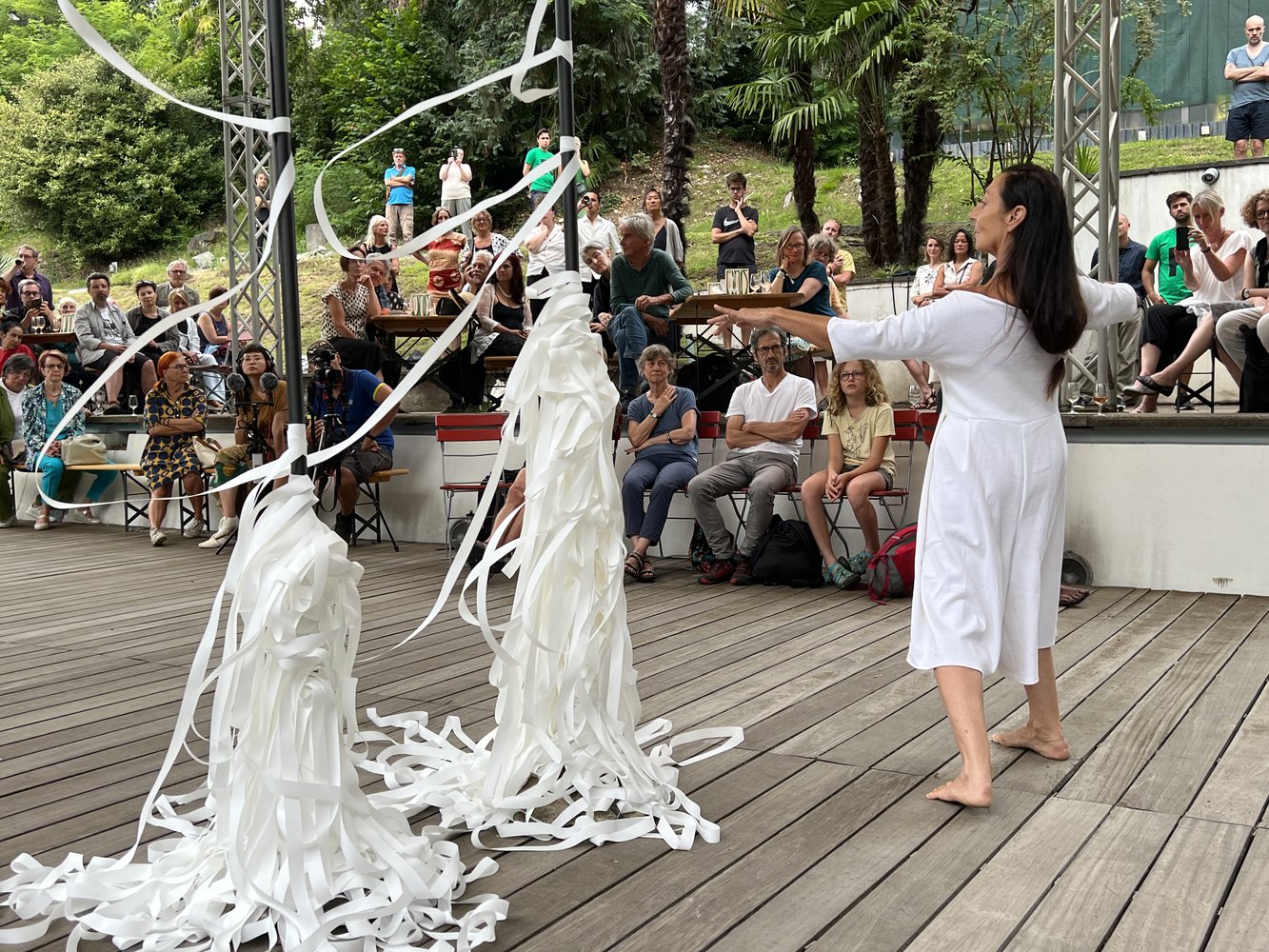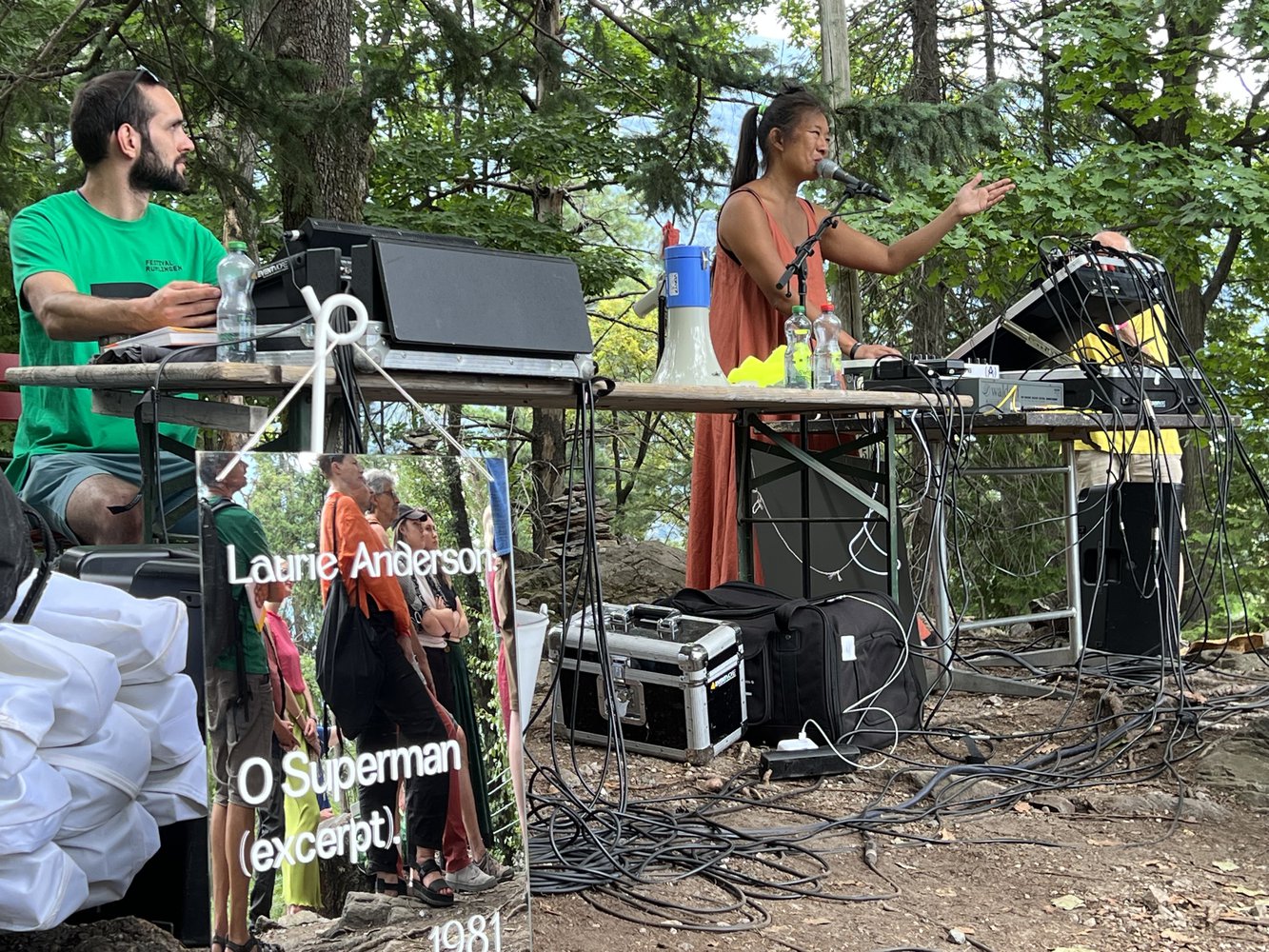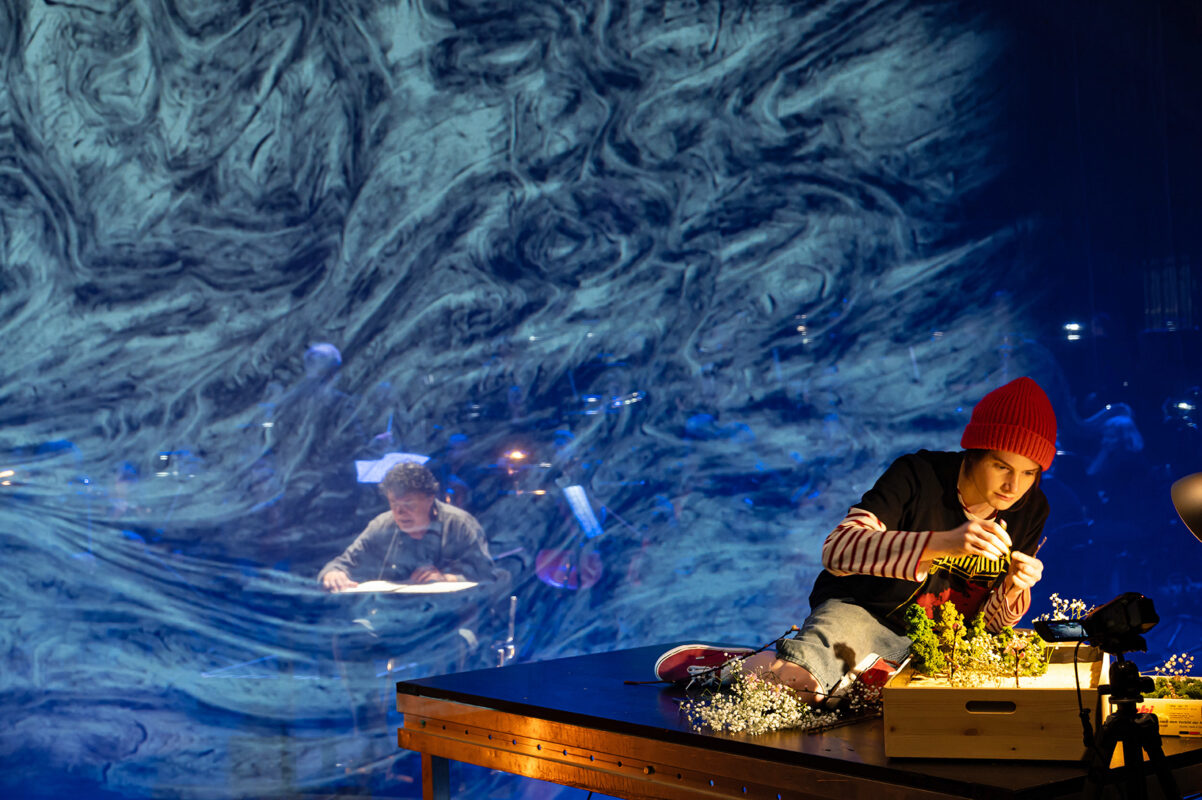Sounding byways through the bushes
The Rümlingen Festival took place in Ticino this time. From July 28 to August 1, new music for a small audience nestled in the southern landscape.

Rümlingen was on the road again at the end of July. After the Lower Engadine in 2019 and Appenzell in 2021, the festival now explored a particularly attractive part of Ticino. The starting point was the former dropout paradise Monte Verità above Ascona. Then it was off on a hike to Valle Onsernone, the little Arcadia of the Swiss-German cultural bourgeoisie, and by boat to the subtropical Brissago Islands, always with compositions, sound installations and other acoustic performances carefully adapted to the landscape in their luggage - sometimes as a well-structured concert, sometimes in the manner of wonder bags for the sonic refreshment of the hiking public.
With its summer festivals, the Neue Musik Rümlingen association, which has been in existence since 1990, consistently takes a side path through the bushes that line the avant-garde mainstream. The handful of media people, composers and music mediators from Germany and Switzerland are well connected musically in both countries and can also rely on the interest of friendly sponsors. Clever institutional cooperation makes it possible to keep costs low. Local partners in Ticino were the Associazione Olocene (named after the story written by Max Frisch in the Onsernone Valley Man appears in the Holocene) and the Teatro del Tempo. The composer and festival founder Daniel Ott As a true Swiss, he also has a good knowledge of the country and a flair for the marginal.
Ticino, the end of the world?
"Finisterre", the end of the world, was the associative motto of the five-day event. As an expression of a romantic yearning for nature, this made perfect sense, and it was also fitting for the remote Onsernone, which is marked by migration. However, as is well known, the limit of perception, the "end of the world", always coincides with one's own horizon. And this now apparently only just reached as far as Lake Maggiore. To associate the tourist hotspots of Ascona and Brissago and industrialized Ticino in general, with its more than eighty thousand Italian commuters every day, with the idea of the end of the world is somewhat naive. In the program book, the organizers undertook all sorts of ideological pull-ups, apparently inspired by the genius loci of Monte Verità. Cloudy speculation about other realities was combined with tourist longings from a Nordic perspective and a touch of cultural colonialism along the lines of "Now we're exporting our avant-garde to the musically fallow south".
Aside from such conceptual contradictions, the undertaking was definitely a success. Everyone was satisfied, the artists, the organizers and the audience. This consisted of a crowd of loyal festival fans who were enjoying a few days of adventure vacation, curious day tourists and a few business professionals; there were few locals. They were one big family, surrendering to the magic of the landscape and curiously following the sound events placed in it. Of course, this was not possible without personal contribution. For example, three hours of hiking were planned for the Onsernone day, and those who were not good on their feet had to pass. Thanks to the secure financial cushion, the festival can afford the luxury of small numbers of participants. The concert on Brissago Island was subject to a numerus clausus due to the small number of passengers on the ship.
Focus on Monte Verità
"Rümlingen" is an experience festival; it is less about the artistic excellence of what is on offer and more about its unconventional perception and also about a more intensive self-perception. So with the group Trickster-pwhich didn't offer any sounds, just lottery tickets with the instruction: "Choose a sound to play in your head. Play it with the following accompaniment: Forest in spring at 5.00 am." The conceptualist gag was part of the opening day on Monte Verità. A similar silent movie experience was provided by the installation Graces by Lukas Berchtold, in which a female dancer moved in circles to paper garlands gently unfurling from above.
There was an intervention with a cultural-critical punchline in the Elisarium can be seen. The inside of this temple-like circular building is populated all around with naked boys, which the Baltic aristocrat Elisar von Kupffer painted on the wall in a paradisiacal pose in the 1930s. The Norwegian Trond Reinholdtsen - a gifted ironist who attracted attention in Darmstadt in 2014 with the beautiful phrase "O old sick Europe, I love you!" - provided a gaudy counterpoint to this slightly stale homoeroticism with a video in which he lets his well-known, brightly colored trolls crawl around and declaims cheerful pseudo-philosophical nonsense.
The forest beckons the eavesdroppers
In the extensive, hilly terrain, you could spend a day exploring the unknown, the surprising and sometimes quite incidental. On the Valkyrie rock - a name coined by the founders of Monte Verità - a singer, backed by electronics, sounded out the surroundings with a Laurie Anderson-Verschnitt. Somewhere in the bushes stood a lonely vibraphone, on the music stand "Der kranke Mond" from Schönberg's Pierrot lunaire.

In a clearing in the forest, there were a few deckchairs for walkers to sit on. Then, at a certain time of day, the scene suddenly came to life. Students from the Conservatorio Lugano stood behind the relaxed recliners with their instruments and gave them a gentle sound massage with soft tones and noises. And when the branches of the surrounding trees began to sway at a secret command, accompanied by the sound of distant bells, it was as if the enchanted forest was peacefully beckoning to the people. The trees from Manos Tsangaris The precisely timed, subtle sound situation was one of the best of the day.







